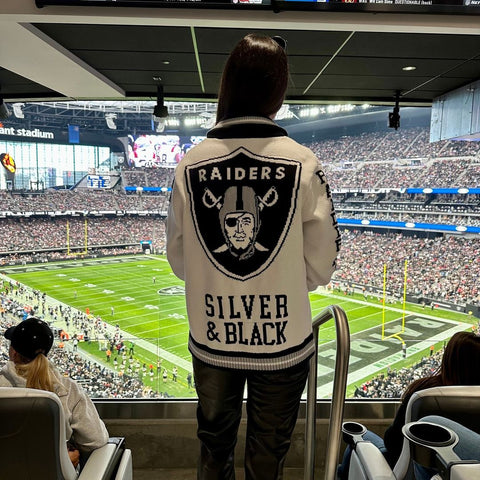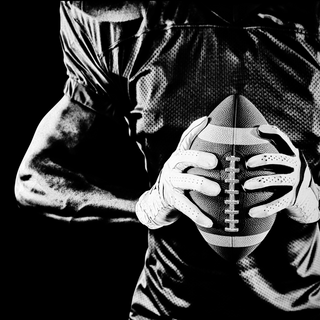The National Football League (NFL) stands as one of the most iconic and beloved sports leagues in the world. With its roots dating back nearly a century, the NFL has evolved significantly, shaping the way we view and experience American football. In this journey through time, we'll explore the remarkable evolution of the NFL, from its beginnings to its current status as a cultural phenomenon.
The Beginning of the NFL
The NFL was officially founded on August 20, 1920, in Canton, Ohio, as the American Professional Football Association (APFA). It started with just 10 teams, many of which no longer exist or have undergone significant transformations. The first championship was claimed by the Akron Pros, who finished the 1920 season undefeated with eight wins.
Throughout the 20’s there were more undergoing changes of teams being added such as the Green Bay Packers, the New York Giants, Cardinals, and the Staleys (now the Chicago Bears) which are still teams today.
The Early Years
During its early years, the NFL struggled to gain widespread popularity. The game was viewed as rough and unpredictable, often overshadowed by college football. Teams frequently moved or disbanded, and the league faced financial challenges.
One pivotal moment came in 1933 when the NFL divided into two divisions, the East and West, leading to the first-ever NFL Championship Game. The Chicago Bears emerged victorious against the New York Giants, cementing the NFL's postseason tradition.
Post-War Growth and Super Bowl Era
The NFL gained traction following World War II, thanks in part to stars like Sammy Baugh, Sid Luckman, and Otto Graham. In 19239, the league's first game was televised which was between the Brooklyn Dodgers and Philadelphia Eagles. It wasn't until the 1950s that TV broadcasts began to revolutionize the sport, in which CBS became the first network to broadcast NFL regular-season games across the nation.
In 1960, the American Football League (AFL) emerged as a rival to the NFL. The two leagues eventually merged in 1970, creating a 26-team which led to the birth of the modern NFL. This merger introduced the concept of the Super Bowl, with the first Super Bowl taking place on January 15, 1967 between the Green Bay Packers and Kansas City Chiefs.
From 1970-1979 the Dallas Cowboys went to five Super Bowl games in which they won two. The Pittsburgh Steelers won four Super Bowls. Additionally, the Miami Dolphins went to three Super Bowls and won two of them in the 1970s.
The Rise of the NFL
The NFL saw the rise of dominant franchises and legendary players during the 1970s and 1980s. The Pittsburgh Steelers, Dallas Cowboys, and San Francisco 49ers, among others, established themselves as consistent front-runners. Meanwhile, star players like Joe Montana, Dan Marino, and Lawrence Taylor became household names, contributing to the NFL's growing popularity.
In the 1970s and 1980s the NFL established itself as one of America's premier sports leagues, a status that significantly contributed to the Super Bowl's growing popularity and consistently high viewership ratings. Its impact continues to resonate on a global scale.
The Modern NFL

(Allen J. Schaben / Los Angeles Times)
Today, NFL teams eagerly await April each year for the NFL Draft, where they select new players. Teams are ranked based on the previous season's performance, with the worst-performing team picking first. The draft consists of 7 rounds, with the first 3 rounds on Saturday and the remaining 4 on Sunday. Teams must make their picks within a set time limit. Drafted players can only negotiate with their drafting team for a year; otherwise, they can reenter the draft.
Furthermore, the NFL's global presence increased as television and the internet reached worldwide fan engagement. This expansion led to the hosting of regular-season games in worldwide cities like London and Mexico City, further solidifying the league's international fanbase. Additionally, the introduction of instant replay and player tracking further heightened the fan experience, ensuring that fans wouldn't miss a single moment of their teams and players in action.
The 21st century marked a new era with record-breaking quarterbacks such as Peyton Manning and Tom Brady, who made contributions to the league's history. As time goes on, the NFL keeps expanding, and players continue to set new records.
The NFL Today
Today, the NFL is not just a sports league; it's a cultural phenomenon. Super Bowl Sunday has become a national holiday, with millions of viewers tuning in for not only the game but also the halftime show and commercials. This annual event has become a shared cultural experience where fans, family, and friends come together to enjoy food while watching the game together either at home or in the stadium and cheer for their favorite team.
NFL Teams (32) in the League:
- Arizona Cardinals
- Atlanta Falcons
- Carolina Panthers
- Chicago Bears
- Dallas Cowboys
- Detroit Lions
- Green Bay Packers
- Los Angeles Rams
- Minnesota Vikings
- New Orleans Saints
- New York Giants
- Philadelphia Eagles
- San Francisco 49ers
- Seattle Seahawks
- Tampa Bay Buccaneers
- Washington Commanders
- Baltimore Ravens
- Buffalo Bills
- Cincinnati Bengals
- Cleveland Browns
- Denver Broncos
- Houston Texans
- Indianapolis Colts
- Jacksonville Jaguars
- Kansas City Chiefs
- Las Vegas Raiders
- Los Angeles Chargers
- Miami Dolphins
- New England Patriots
- New York Jets
- Pittsburgh Steelers
- Tennessee Titans
The Future of the NFL

The NFL's evolution is far from over. It will continue to adapt, redefine itself, and shape the future of American football, remaining a central part of our culture for generations to come. As we look ahead to the NFL's future, one thing is certain: it will continue to captivate audiences and inspire passion, just as it has for the past century.
Are you geared up for the Super Bowl or excited to cheer on your favorite NFL team? Shop our collection of NFL team merchandise to show your support in style!

